Eye exams can be performed at any age! According to the American Optometric Association (AOA), infants should have their first comprehensive eye exam at 6 months of age. The AOA also recommends exams at age 3 years and before your child starts school, around age 5 years or 6 years. At the child eye exam, your doctor will evaluate your child’s visual status, eye tracking, eye muscle function, color vision, overall eye health and depth perception. Your doctor will use those results to develop an assessment and plan best for your child. By dilating your child’s pupils, your doctor will be able to examine the internal structures of the eye and accurately refine a glasses prescription.
Evaluation of Strabismus and Amblyopia
Strabismus and amblyopia are eye conditions which are both sometimes referred to as “lazy eye.” Specialized testing is performed during the comprehensive eye examination to diagnose strabismus/amblyopia along with type, severity and treatment options. To evaluate for strabismus and amblyopia, you doctor will assess eye tracking ability and movement, muscle action, fixation and binocular vision.
Strabismus Surgery Co-Management
If strabismus is diagnosed, the treatment plan may include strabismus or eye muscle surgery. Your doctor may refer to an eye surgeon for consultation and treatment. Your doctor will work in partnership with the surgeon, usually a Pediatric Ophthalmologist, to perform pre-surgical measurements, treatment and post-operative follow-ups.
Vision Therapy Co-Management
Some vision problems do not require surgery for correction and may benefit from vision therapy. Vision therapy is a form of physical therapy used on the eyes and brain. It is designed to resolve vision problems that can contribute to learning disabilities. This therapy can also be used an effective treatment for problems like convergence insufficiency, learning-related vision problems, or visual changes after a traumatic brain injury.
Myopia Control for Kids
Myopia, also known as "nearsightedness," causes the eye to grow longer and have difficulty seeing distant objects clearly. The prevalence rate of myopia has doubled in the United States in the last 30 years. When myopia reaches high levels, it increases the risk of serious eye conditions like glaucoma, retinal detachments, and myopia degeneration. Because the onset of myopia and its progression often happens during childhood, it is a critical time to monitor and possibly intervene. Many clinical studies have shown alternatives to conventional glasses that are potential methods to slow or even stop myopia progression. Please click here to learn more about our Myopia Control program.
